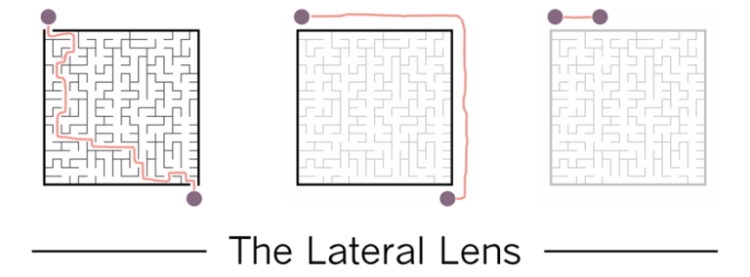
The Trojan War
Consider that the story of the Trojan horse is a story about war; and, in certain respects, it offers an apt metaphor. In many organizations a battle of sorts is being fought, even if largely unstated. In this version of the story, the Greeks don’t offer the gift and pretend to sail away. Here, the Greeks work for Trojan leadership.

The Trojans typically bring in external consultants to help build the horse. The Greeks are happy to help, but they have their own reasons. Both sides agree it’s a “transformation,” but that’s all they really agree on. The Trojans think it’s a Greek transformation. They just want a faster horse. The Greeks think it’s a Trojan transformation. They believe something hides inside the horse, something that will have to come out eventually if “agility” is to be anything more than lip service.
Honestly, the Greeks are probably more in the right, and here an ethical dilemma arises: Should those who better understand Agile push it as a way of saving organizations over and above letting leaders know it’s really not what they think it is? And, more to the point, how could the Trojans be so wrong?
Well…Scrum….
We can’t talk about this without mentioning Scrum. Sutherland successfully sold Scrum in the guise of Agile as something that will get executives “twice the work in half the time.” (So, 4x the work? Sign me up!). This is a direct appeal to the Trojans. They think Agile is about getting more work out of people, which, if we’re really honest, ultimately boils down to getting work done with fewer people. (Why else do Agile transformations tend to come with layoffs?)
After all, this is how executives are paid to think. More value might be generated by maximizing outcomes per least amount of work, but that doesn’t get one a bigger bonus. Remember, what is incentivized is the policy—all else is lip service. The Scrum bill of goods resonates with orgs that treat busyness as a proxy for productivity, cost as a proxy for value created, and output as a proxy for real-world consequences.
The Greeks, of course, also want Agile, which they see as separate from the Frankenstein’s “Waterscrumfall” so beloved by the Trojans. They think they see inside the horse, and inside it is not only the death of top-down command-and-control push systems but of many of the structures that feed into it. This leaves us with two groups using the same terms while speaking completely different languages and often with radically different agendas—and we wonder why Agile transformations fail.

Agile transformations often devolve into power struggles and, paraphrasing MacArthur, don’t so much die as just fade away…or fizzle out. But does it have to be this way? In their excellent book, Inviting Leadership, Mezick and Sheffield offer a possible exit. Leveraging the emerging field of Authority Studies, they call for an updated understanding of the role of authority in organizations.
Informal Authority
In the analogy above, the Trojans think the answer is to focus on the efficiency of the Greeks. The Greeks think the Trojans should be replaced with something flatter and self-organizing. Both are wrong. First, those who bother looking—such as Tim Ottinger—argue that dev teams are seldom the constraint in the system anyway. As Drucker put it, “The bottleneck is at the top of the bottle.” Increasing Greek output doesn’t fix this. Second, removing this constraint from the top does not really entail making the Trojans “Agile.”
The Trojans in our comparison are what Mezick and Sheffield refer to as “formal authority.” This is leadership as defined in the formal org chart. They argue that formal authority structures may be as much as 1000x times too slow to keep pace with most work. As this implies, the formal org chart rarely depicts how the real work gets done. Most work gets done via informal networks of authority and knowledge, the self-managing allegiances which emerge independent of the formal org chart.
As Mezick and Sheffield rightly stress, those who disparage this as “shadow hierarchy” ignore that such networks are essentially a workaround that may in fact be what is keeping the org alive and functional. When reorgs and layoffs lay waste to these informal knowledge networks it can take organizations years to recover. The highlighted siloed and short-term (and therefore short-sighted) cost savings that executives choose to focus on are likely peanuts compared to the value sapped from the larger overall system.
This does not mean, however, that Agile should somehow do away with formal authority. Not all of leadership can likely be “self-organizing,” after all, and that’s fine. There may be a sense in which Agile is mostly tactical in nature. I believe it was Mark Cuban who I first saw questioning the notion of “Agile Strategy.” Yes, you should want to keep changing your experiments to achieve what you’re trying to achieve, but you shouldn’t keep changing what you’re trying to achieve! (Or as Michael Boricki puts it, Agile Strategy is a myth: Strategy is always “all-in.”)
The Greeks in our analogy are ignoring that the informal system has its problems too. Power lies in knowing how authority is distributed. In the informal system, this is both in constant flux and only tacitly known. There are no publicly visible “rules of the game,” and that’s an issue. If that’s all there was, then everything would be politics. The formal hierarchy is direly needed then, but Agile does prescribe what its focus should be.
If, as Drucker said, the real bottleneck “is at the top of the bottle,” then what’s the cause? The cause is what we might call “decision authority hoarding.” Real agility likely has more to do with the distribution of decision authority in organizations than with the efficiency of dev teams. Formal authority tends to want the entire system syphoning information up to decision makers. That is not Agile. Instead it should be delegating decision authority down to where the information naturally resides. Remember Andy Grove’s admonition: Decisions should be made by the lowest level responsibly possible.
This is achieved by having the formal hierarchy focus on structuring the known “rules of the game.” They should focus on shaping the constraints the informal authority networks then work within, granting authority to the informal networks to make the decisions when needed (at the “last responsible moment”), so long as they are within the given constraints. (This also goes far in minimizing delay costs.)

Some at the top won’t like this. It means they need to stop being “authority hoarders.” That’s unfortunate, because we cannot keep pretending it’s the 1980s. The world has changed. As executive coach Sharone Bar-David puts it, “Power isn’t what it used to be.” The old view in the corporate world was that power came with certain “privileges.” Instead, we need more a Christian or Lakota view: Power actually only comes with responsibility. To see this, we must also distinguish between what Mezick and Sheffield call “legitimate” and “illegitimate” authority.
Your day-to-day actions as a leader, your congruence or lack thereof, your presence, how you “show up,” continuously determine the very legitimacy of your authority, which must be continuously earned. Just because you’re in a position of formal authority does not mean anyone will consent to your leadership or even take you seriously. “Leadership” is about making decisions that affect the group. Authority is only legitimate to the extent those affected by such decisions support the person making them.
When the formal hierarchy ignores information flowing from the informal networks, trouble follows. At best, morale will tank. At worst, there will be mutiny. The informal networks will start to undermine the formal structure. Remember, this is of necessity—the informal networks are what get the real work done. When the formal authority hierarchy ignores this dynamic it pours gasoline on the very subculture power struggle that tanks so many transformations.

To close, no org can increase its ability to sense and respond in a complex environment by keeping decision authority confined to its formal hierarchy. Agile transformation, properly understood, is about keeping formal authority in place while empowering it to manage differently. As Rob England puts it, Agile transformation, at its very core, is about new ways of managing. It’s about new ways of leading.
Sorry Trojans. At the end of the day, it’s not about dev team efficiency. And how could it be otherwise? What is the point of management, after all, if not to help the org handle complexity?
So, how do we stop fighting the “Trojan War?”
First, we stop trying to make the formal authority structure “Agile.” There is nothing about it that could ever be Agile in the first place. Second, the formal hierarchy, if it ever wants to move past lip service to Agile coupled with same-old same-old top-down Waterfall, must focus on enabling the informal authority networks to make fast decisions, close to where the information lives, as they learn their way forward in a sense-and-respond (again, read “Agile”) fashion.

As always Charles a very thought provoking piece. I agree with how you have framed the problem but I will add a wrinkle and I’d love to know your thoughts. As you state there is always way more decision making that needs to be done at the top than there are people to do it, but in an organization with a lot of money this part of the organization grows at a faster rate than the Greeks (to strain the analogy). Ultimately systems and layers are put in place to try and accommodate the authority hoarders, i.e. they keep adding rooms onto their house to fill. In my experience the Trojans extract some of the Greeks to help them make decisions (analogies aside that actually happened). What does it look like to unwind that and reintroduce these Trojanified Greeks back into the Greek army? How do we get the dragon to give up their hoard?
LikeLike